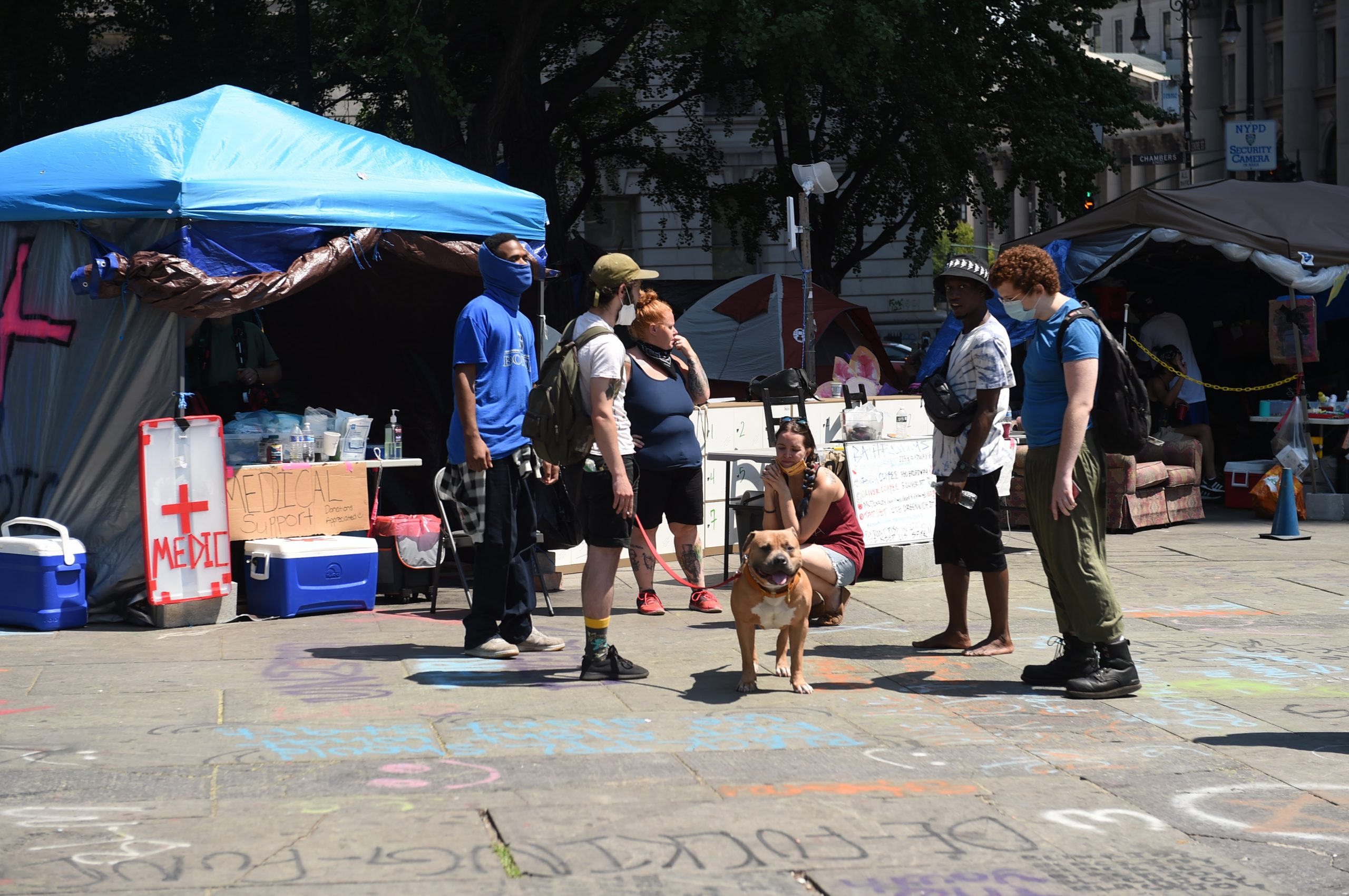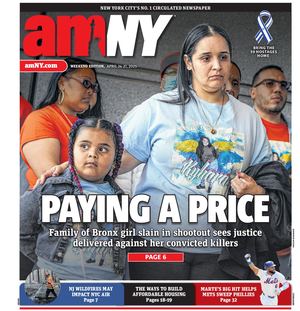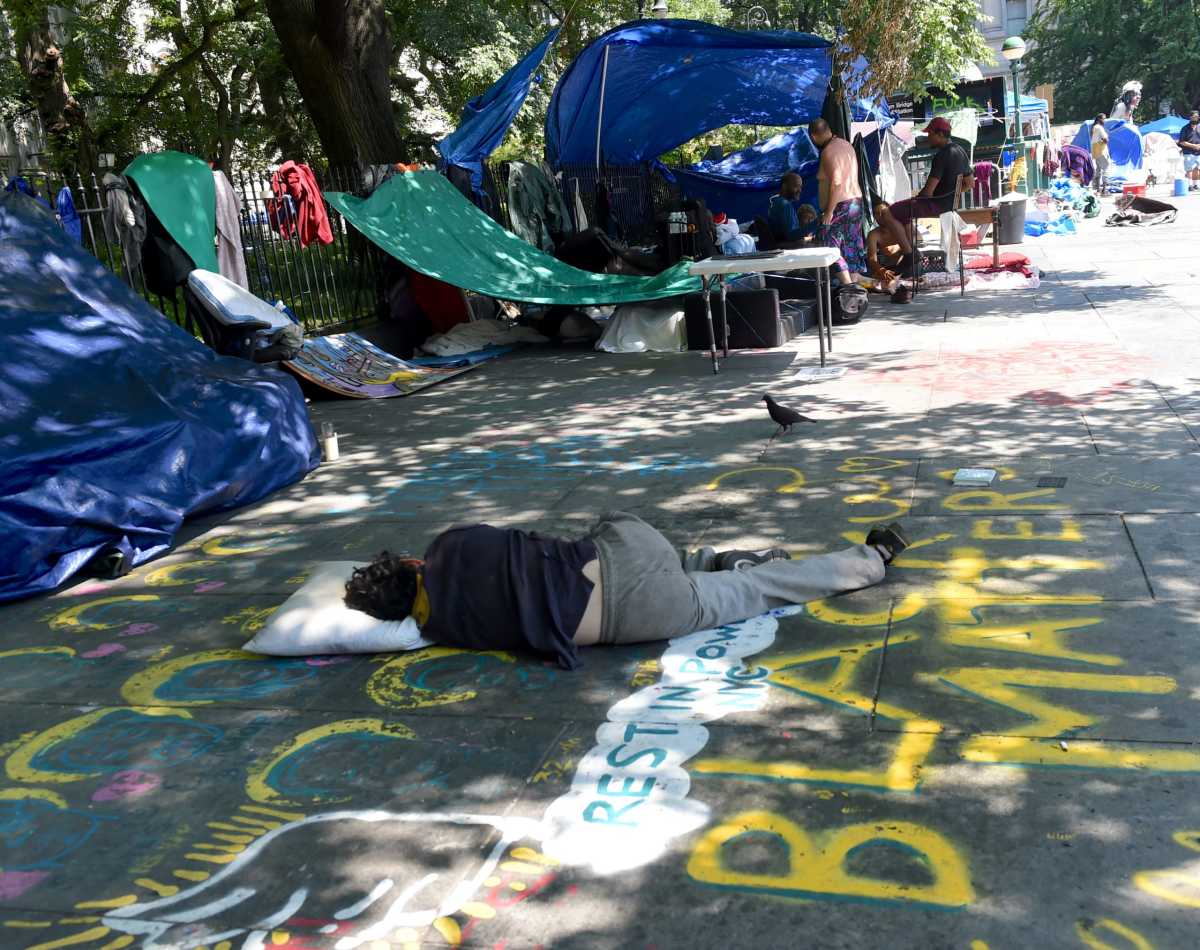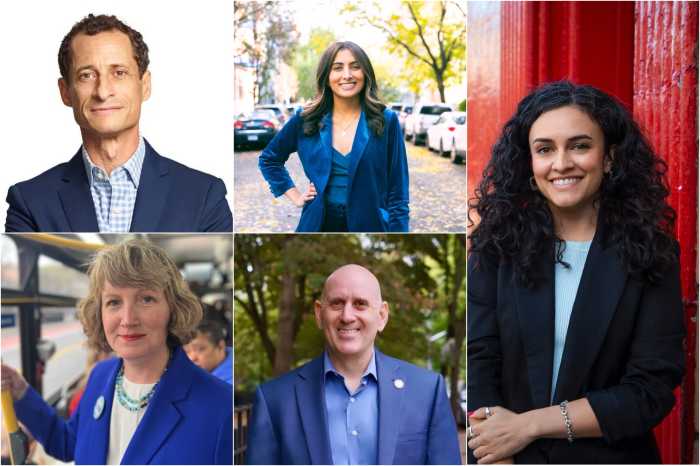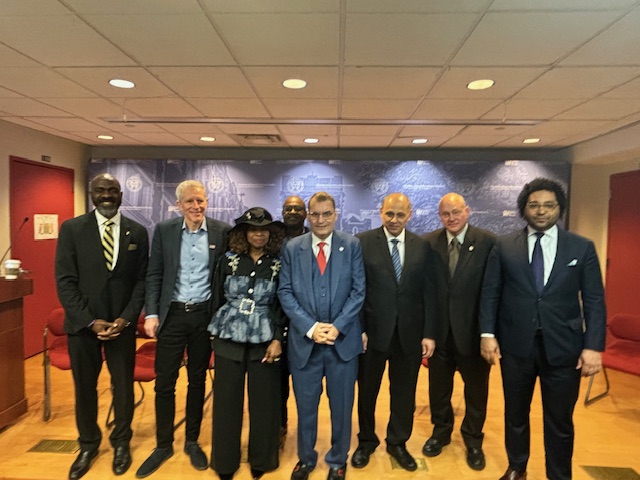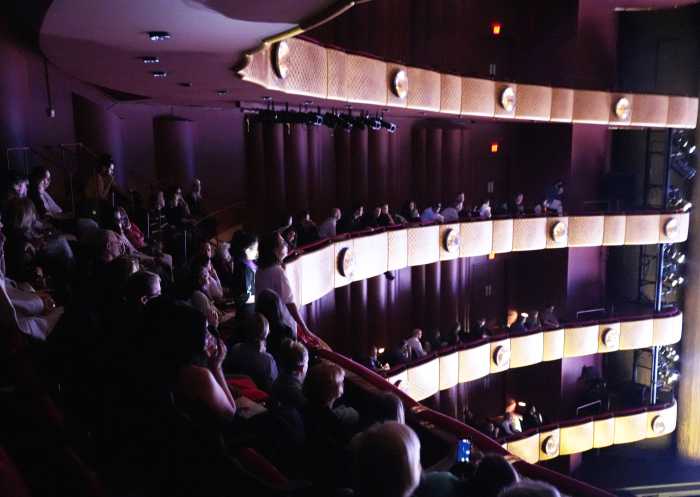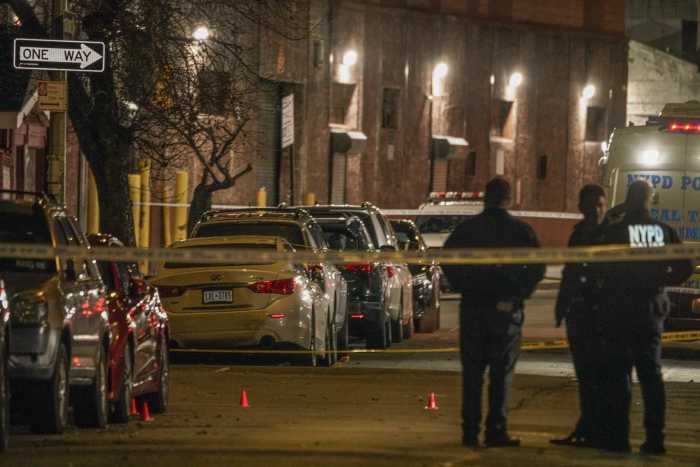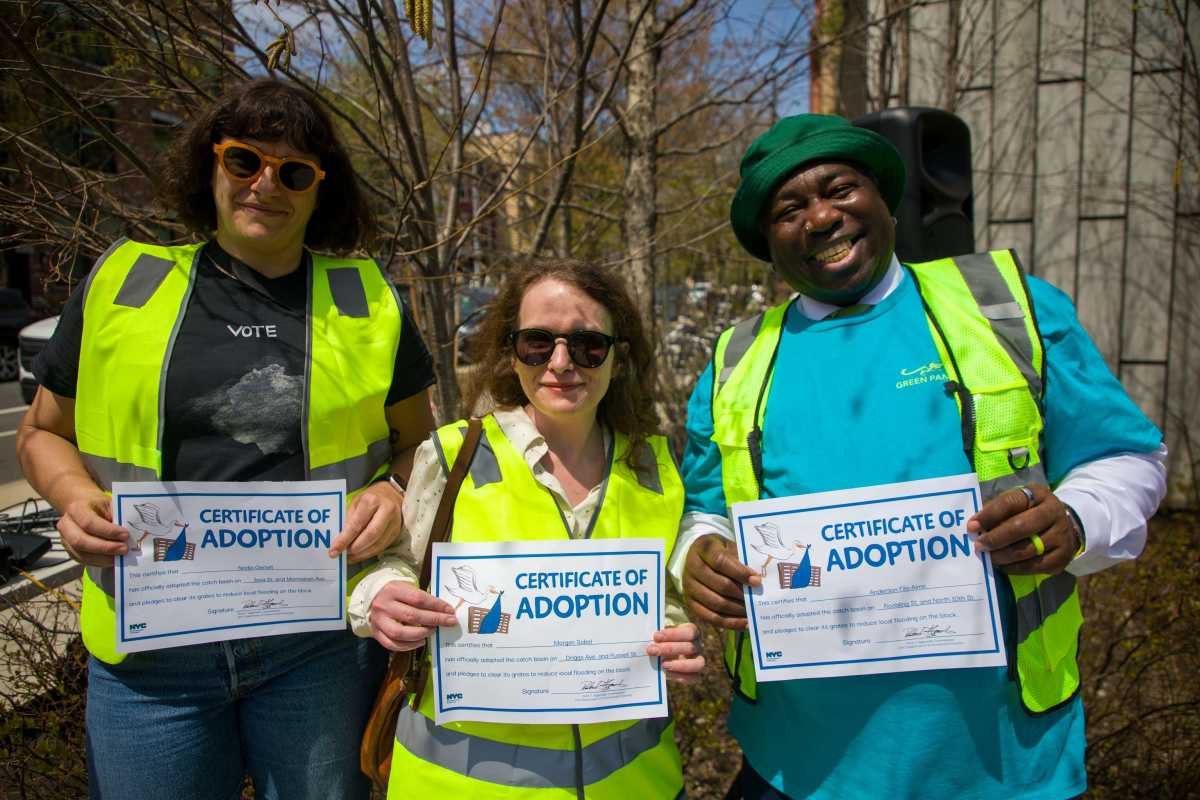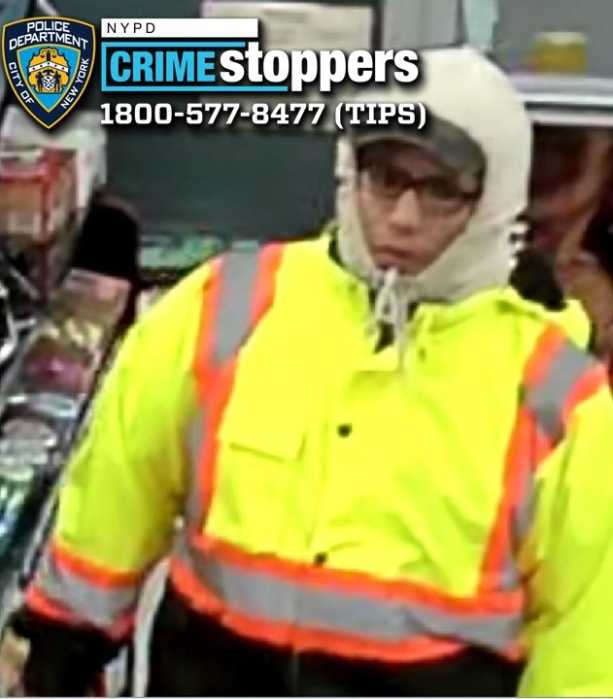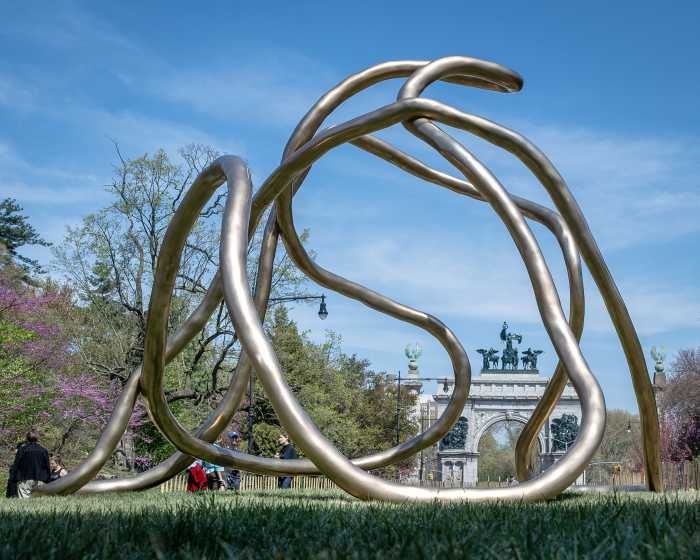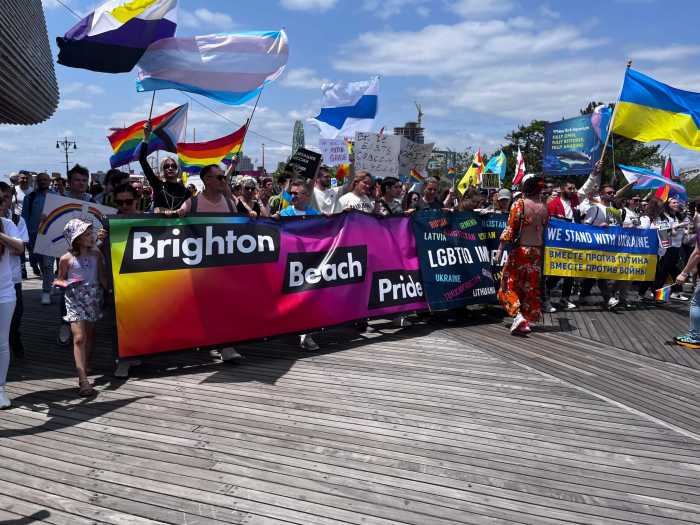It started out as a statement against police brutality and an effort to defund the NYPD, but #OccupyCityHall has become something different — and disturbing to many onlookers.
The encampment has become a menagerie of people stuck in the kinds of problems the city has either ignored or mishandled — such as homelessness and mental health care. The camp is looked upon by many as an eyesore, full of refuse and debris, with surrounding government buildings covered in colorful, often disrespectful graffiti.
Now, even the occupiers of the park at the corner of Centre and Chambers Streets themselves admit that they have accomplished part of their goal, but the encampment itself has become the very real symbol of what they were talking about: the need to shift resources away from the NYPD and toward long-overlooked problems facing the city.
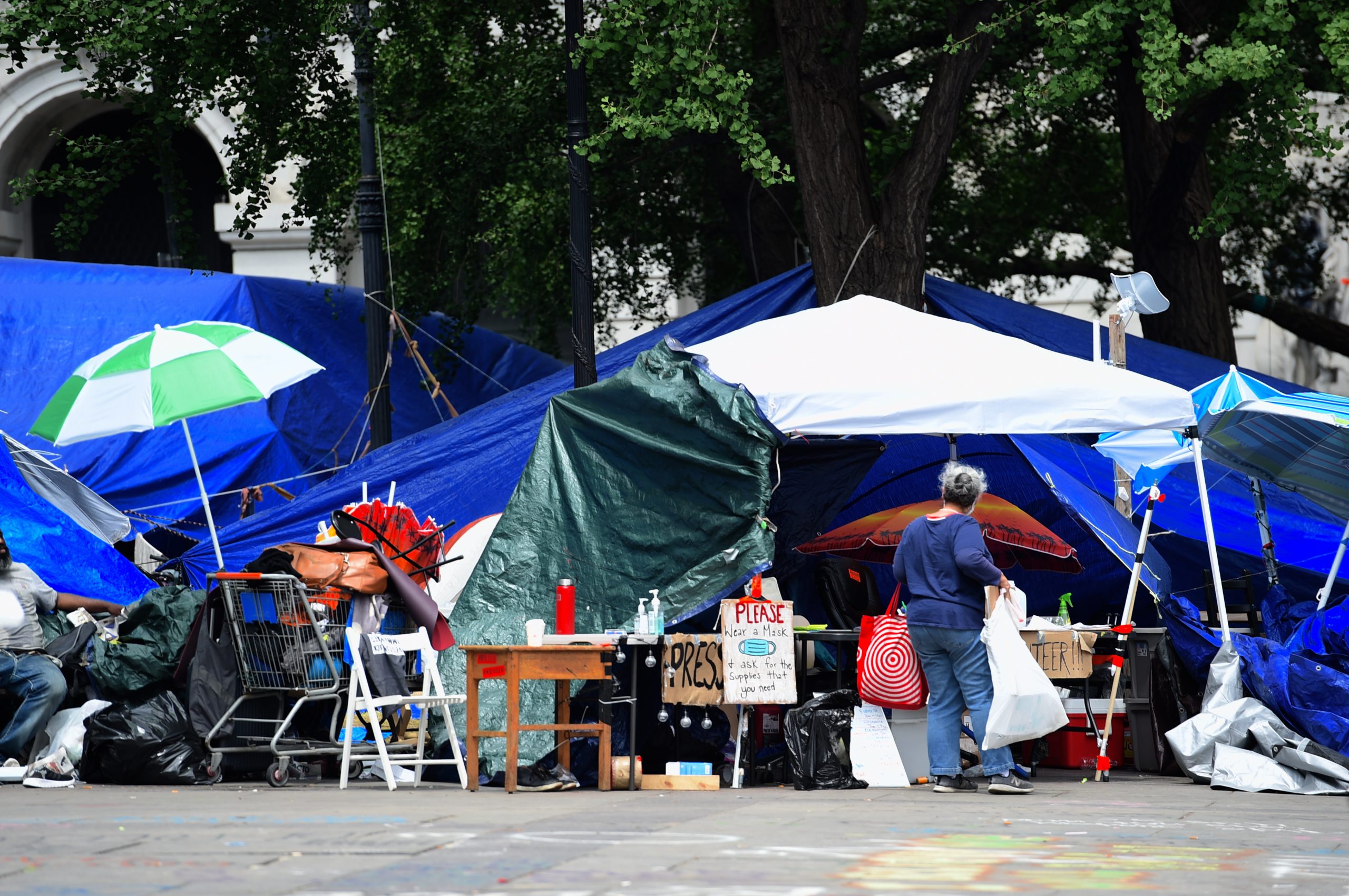
Mayor Bill de Blasio was asked about the encampment today on his on-line press conference, saying that it will be “the decision by the NYPD” on when the encampment will be removed – to be decided, “day by day.” On the contrary, some highly placed police officials say they await word from the mayor’s office on when and how to remove the encampment and what to do with the many homeless and mentally ill who live there.
In the meantime, the mayor vows to clean-up the graffiti on the plaza and on the surrounding city buildings. Manhattan Borough President Gale Brewer has said this effort will cost the city “millions.”
Much of the vandalism is anti-police rhetoric, scattered with foul language, lining the exterior of the David Dinkins Municipal Building, the Department of Education and the Surrogate Court.
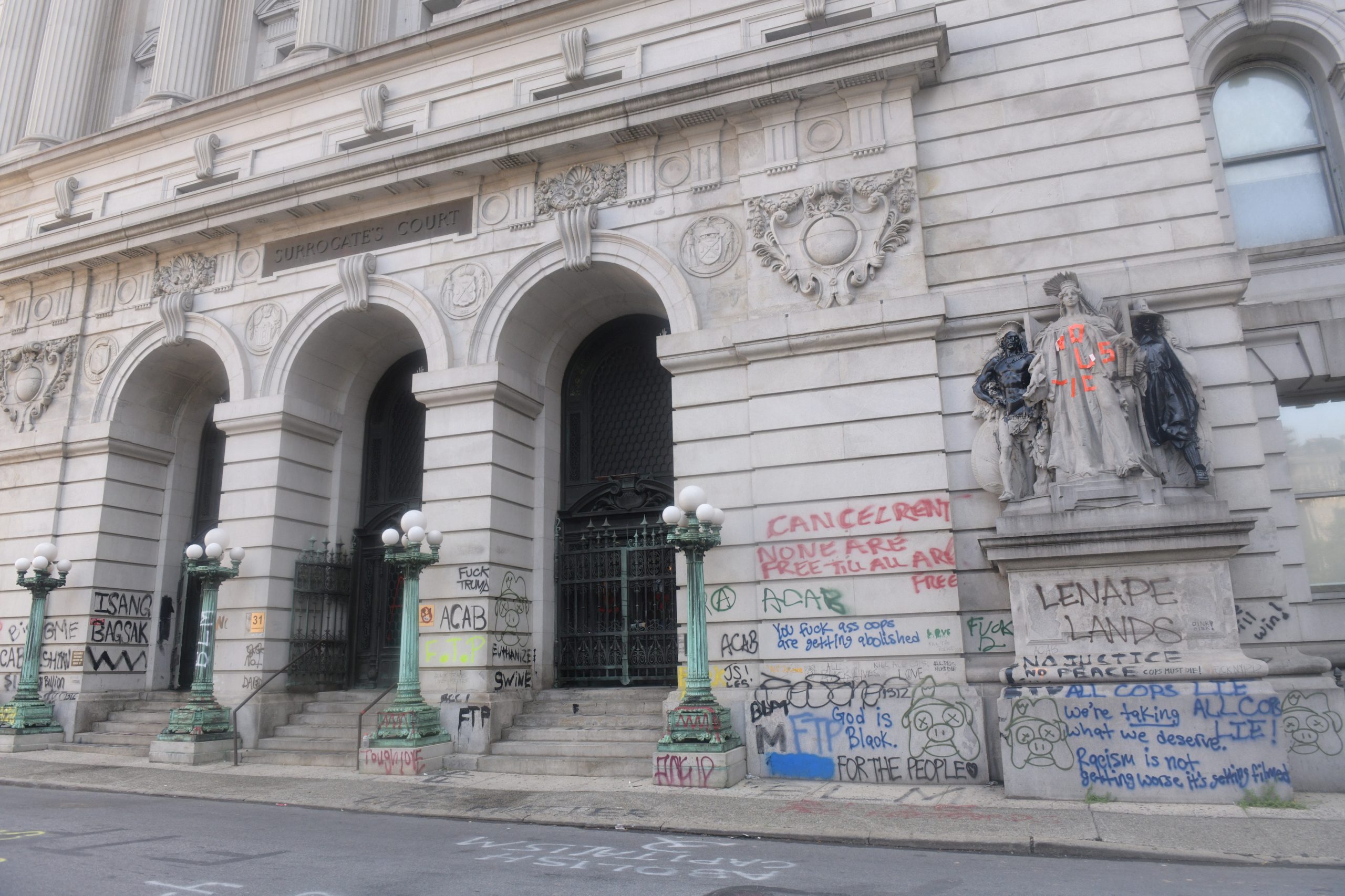
“We have to strike a balance between the, right to protest, and especially public safety,” de Blasio said Tuesday. “On one hand, they (the occupiers) have constitutional rights, but I always put public safety first. While respecting constitutional rights, but that decision will be made by the NYPD as things emerge. We are looking at the situation every day. We know you would like to see it end, but the decision will be made day by day.”
Not surprisingly, one member of the NYPD standing a post at City Hall disagreed.
“This is a never ending story,” one masked NYPD cop guarding the gates of City Hall said. “When elected officials start coming back here, they will see it and they will have do something. In the meantime, we have to deal with it.”
Government officials have privately said they were “afraid” to walk through the encampment. One City Council official told amNewYork Metro, “I won’t walk through there, it’s just too dangerous.”
In the past few weeks, members of the media have been attacked, some assaulted and even robbed. Two sanctioned press conferences, one by Public Advocate Jumaane Williams and Manhattan Borough President Brewer, were disrupted by those occupying the City Hall Park area, even though the lawmakers’ messages were in-line with the protesters.
The occupation however, is now a shadow of what it was at its height, with only about 150 people living in tents or under tarps on the formerly grassy triangle under the trees, or on the slate walkways along the fence of City Hall.
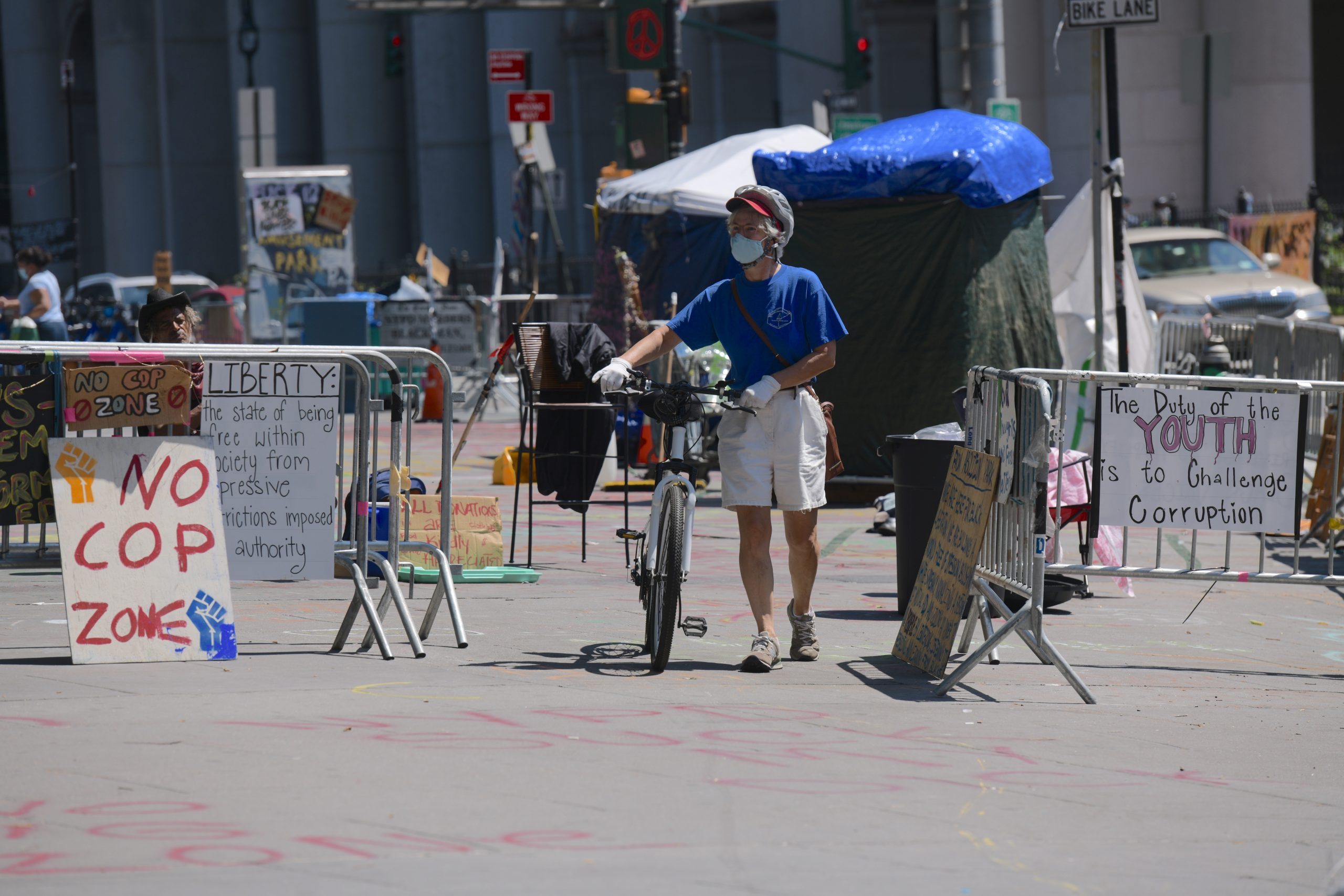
Those who were there a few weeks earlier training to physically fight police and were making weapons out of wood have left and gone home. The remaining occupiers appear to be a combination of the homeless and die-hard activists who man first aid stations and distribute food and toiletries.
Passersby, however, didn’t have many positive things to say about the remaining encampment.
“I work over here for the past 40 years and pass here all the time – it’s really awful what’s going on here,” said Eileen Sullivan, a resident of the Lower East Side.
Jane of East 14th Street said she wasn’t scared to walk through the site, recently swept clean by volunteers. She said a man asked her for a donations at the gate, which was strewn with posters, many of the more caustic ones having been removed.
“I just walked through, its more than a protest, its something different now, but think it cant last forever,” said Jane having wheeled her bicycle through the middle of the encampment.
One woman however, who wouldn’t give any name, said she was “disgusted” by the scene.
“When is the city going to clean this up,” she groused. “Why are the homeless allowed to live here? People are afraid to walk through there.”
Occupation with a different vibe
In the past two weeks, however, the mood has changed, and some protestors have become more willing to talk.
Sitting at the entrance to the encampment, Jamal Salange sat in a chair with a donation box, asking passers by to donate money to help the people making the plaza their home.
“We’ve hit a reset button here,” Salange said. “This is a reset of the social reconstruction brother. There’s no color – you have to get beyond class and racism, sexism and all these ‘izms.’ The homeless situation is the biggest hustle – you see Maria Cuomo running homeless shelters and everyone is eating off the homeless except for the homeless. I don’t know what this is all going to bring, but it’s a start.”
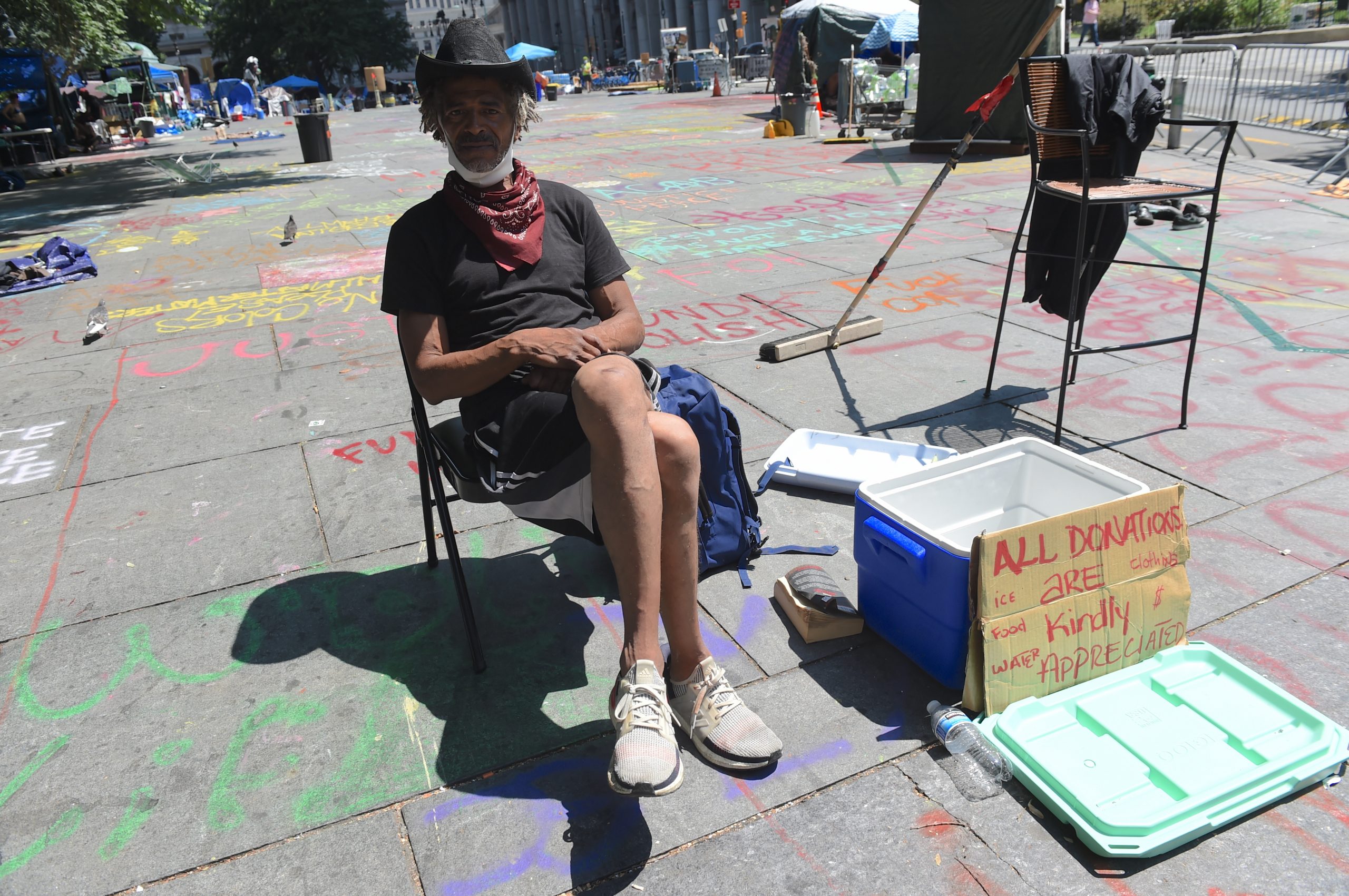
“People can be aggressive here, so you need to be on your alert,” said another encampment resident, Nicole from New Jersey. “People here have had a hard life. Yes, a lot of people here are homeless – some victim of poor choices, were victimized, or mentally ill. I’m here on trial basis, but people have said some are very aggressive.”
In the center of the encampment, Dillon O’Carroll of New Jersey, studying sociology, swept the floor and searched for a dust pan, only to use a discarded poster.
O’Carroll pointed to a row of lockers he said they added to secure people’s belongings. He said they now have “a space that’s clean, there’s food, there’s cigarettes and there’s water – you can have baby wipes – we cleaned up this morning.”
“A lot of people are paying attention and showing love to these people,” O’Carroll said.
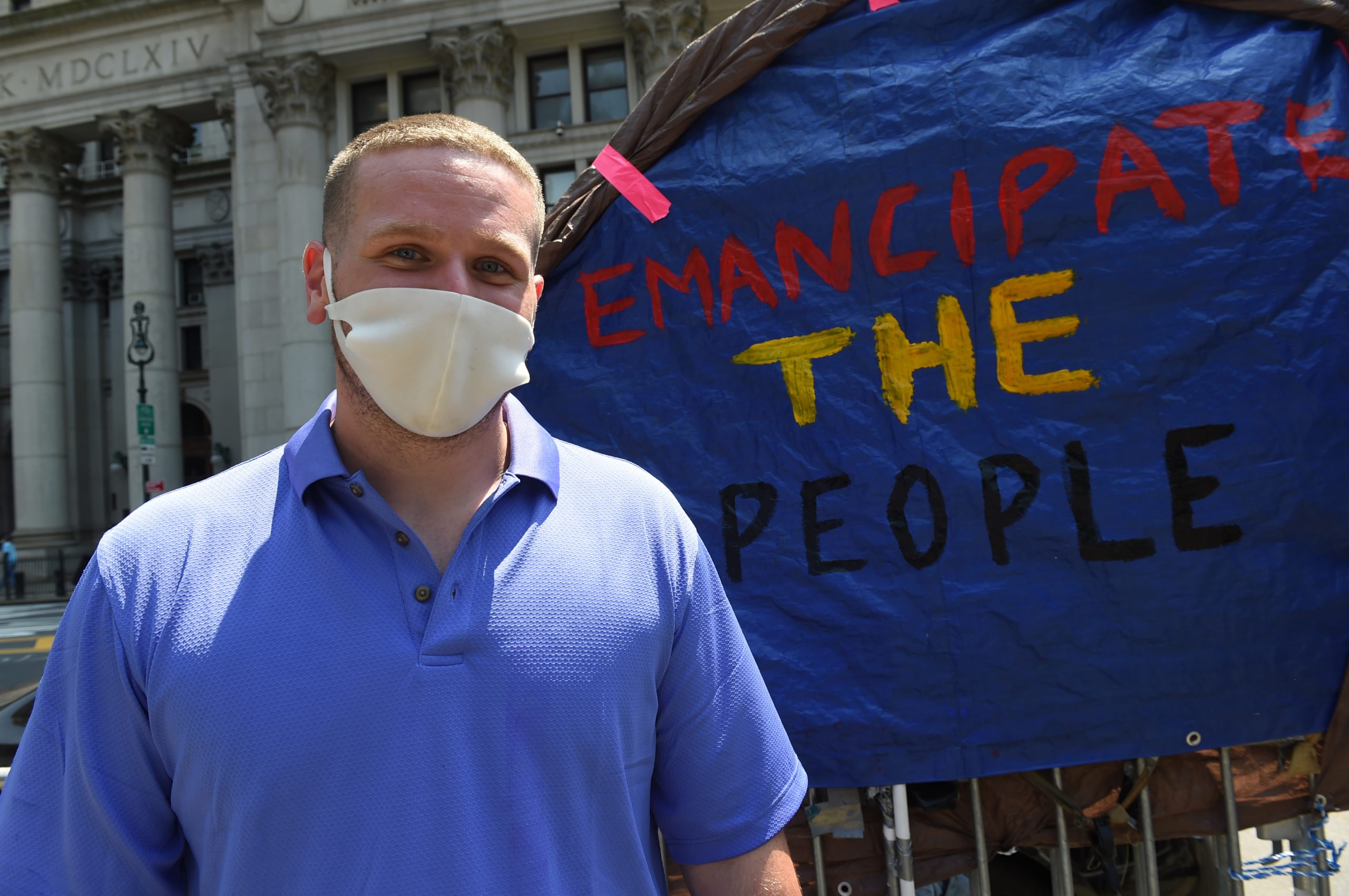
He introduced Sarah, a timid, young woman wearing a surgical mask and wispy blond hair tucked under a small pink hat. She said she was tortured and victimized all her life, is currently homeless, has gone from shelter to shelter, where she says sexual abuse and verbal barbs by shelter staff and shelter residents and mental health professionals have failed her.
While Sarah said she didn’t want to talk about it, she then went into a litany of experiences from family life, to street violence that she says has left her “permanently traumatized.”
O’Carroll moved us away eventually, saying she would talk endlessly.
“Animosity here came from a lot of people traumatized by the city’s violence – they were triggered by police riding by here all the time, they have the lights, they send helicopters, a whole lot of things – its even triggering to me,” he said. “A lot have been arrested for protest, but people are really dying out here and so this turned into a space for people from all types of environments who have been touched in some way or another by state violence through mental institutions or being hospitalized – all with traumatic experiences sitting in one space,” O’Carroll said.
Kenny Humphrey, a young Black woman from Bedford Stuyvesant and volunteer helping to maintain the encampment, said “Once in a while, you have your days like you just wanna give up, because when you spent a month a way from home, it’s a lot.”
“I know that our presence makes everybody uncomfortable, and that’s also why we are still here,” Humphrey said, pointing to one man who said would probably be dead from heat exhaustion if they hadn’t helped.
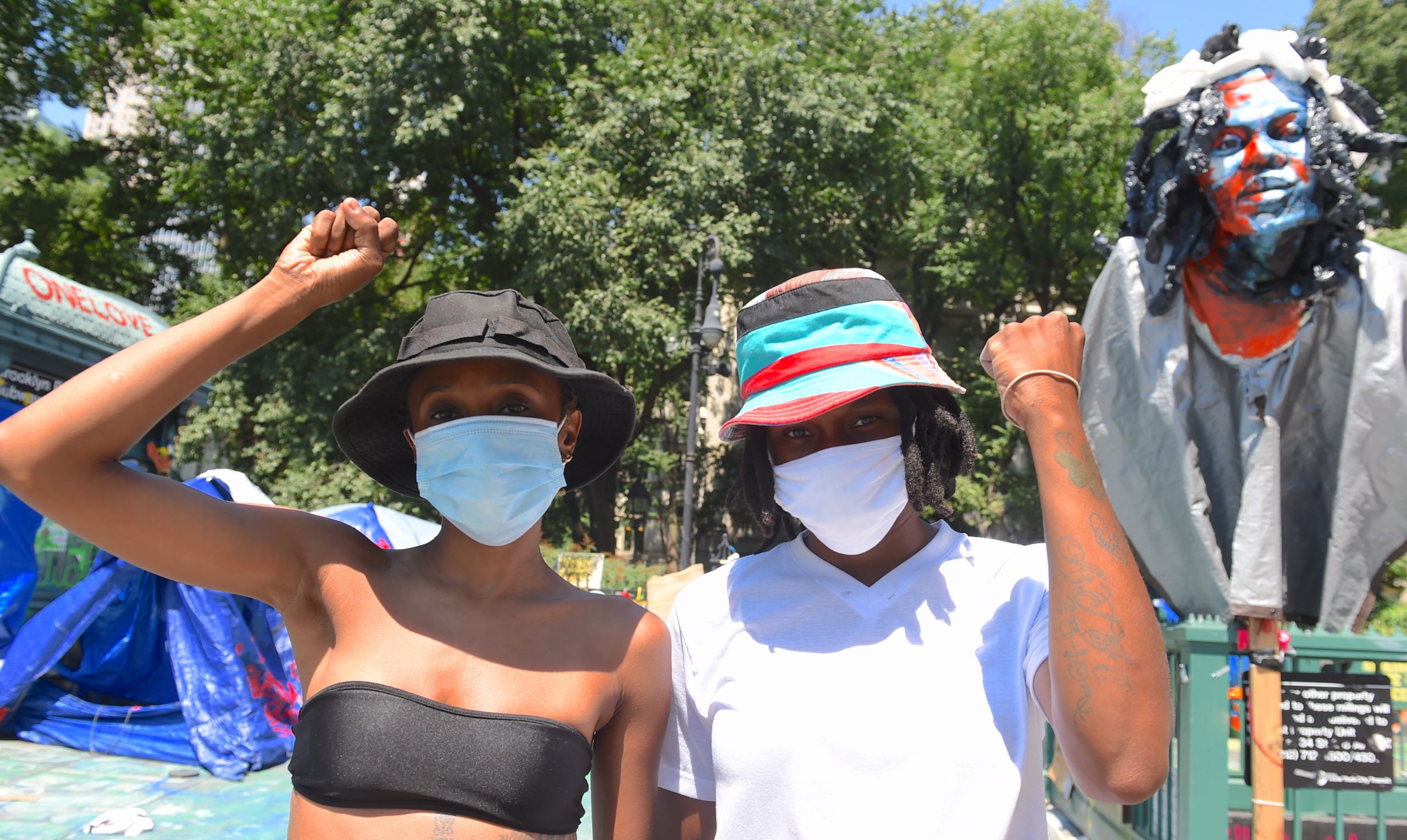
“Nobody really understands – this wasn’t only to defund or abolish the police department, but to get funds to help people and make sure they are getting the help they need. We all know that NYC has a homeless issue, a lot of us don’t walk past it – we are now forced to examine the problem of homelessness and why so many people are being neglected and not receiving mental health assistance – nobody wants to cover it,” she sighed.
